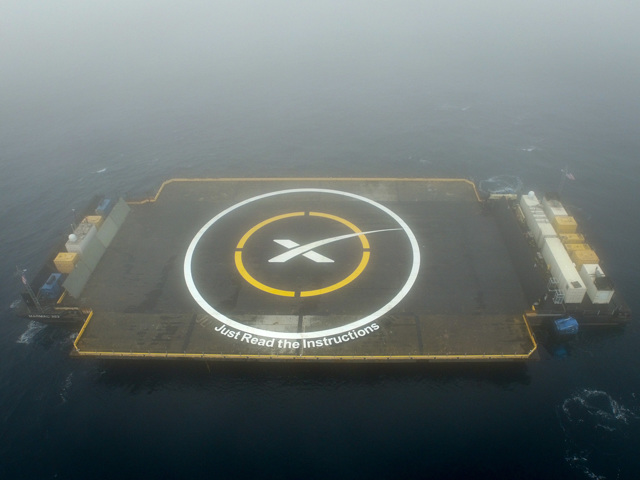SpaceX Falcon 9 Sea Landing Fails, Payload Orbital Insertion Successful
After successfully inserting the Jason-3 weather monitoring satellite into orbit, SpaceX’s Falcon 9 rocket attempted to land on a drone ship in the Pacific Ocean. Unfortunately, one of the rocket’s legs failed to lockout during landing, causing the spacecraft to tip over and explode upon hitting the ground. This marks the third time that SpaceX has attempted to perform an ocean landing and failed; the company’s previous two attempts ended in various explosive ways.
View SpaceX’s Falcon 9 webcast below:
Last month’s launch was markedly more successful. On December 22, 2015, about twelve minutes after liftoff and after detaching from the Merlin second-stage booster and its payload of Orbcomm communication satellites, Falcon 9 Flight 20’s first-stage booster landed vertically at Landing Zone 1, some 9 kilometers away from its launchpad. This marked the first time that a rocket that launched an orbital payload has ever been successfully recovered. That rocket was subjected to some post-launch tests, including a static-fire test where it was fired at full thrust for a few seconds while being held to its launch mount, and it passed them with flying colors, indicating that not only was it successfully recovered, but it was ready to fly again. Elon Musk indicated, however, that this Falcon 9 won’t be going back to space, having said in a post-launch press-teleconference, “And then I think we’ll probably keep this one on the ground because it’s quite unique, it’s the first one we brought back.”
Landing on a drone ship is more difficult than landing on stable ground, and the 10-to-13-foot waves that buffeted the autonomous ship Just Read The Instructions during today’s launch may have contributed to the failure of the landing, but this method saves on precious fuel. Rocket launches follow a parabolic trajectory that bring them away from their launchpads; having to return to a prepared landing site nearby would require a lot of fuel expenditure for the necessary course corrections. Making the landing site a movable target in the ocean along the rocket’s flight path reduces this need for course correction, and in turn reduces the amount of fuel that needs to be onboard.

The significance of a reusable rocket can’t be understated. It’s a common and understandable misconception that fuel costs are a substantial part of a rocket launch; all it takes is one look at the huge plume of burning gas in any launch, and it seems obvious that all that liquid hydrogen and oxygen being set on fire is probably very expensive. In an interview with New Scientist, however, SpaceX CEO Elon Musk noted that “The fuel, oxidiser and pressurant on a Falcon 9 rocket accounts for about 0.3 per cent of the cost of the mission, about $200,000.” The cost of an entire Falcon 9 mission is around $60 million, and potentially until last month, SpaceX had to pay that price with every launch, because they had to rebuild the rocket for each mission.
Despite today’s failure, the primary purpose of this launch was to insert its payload into orbit, and in that regard it was successful. SpaceX’s Falcon 9 landings have all been labeled as “experiments” so far, and with each failure, their engineers tweak everything from hydraulic fluid capacity to how sturdy the landing struts are, based on data gathered from the mission. With several launches lined up for the company in the coming months, as well as their stated commitment to sea landings for the next several rocket launches, there will be plenty of time and opportunities for them to figure out how to land.
And then maybe Elon Musk can finally return to his alien homeworld.





So. Close!